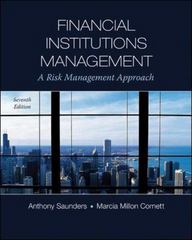
Question 20 of 23 An analyst is building a DCF on January 1, 2017 and has calculated unlevered free cash flows as follows: 2017 Unlevered free cash flows 100.0 2018 2019 2020 2021 2022 105.0 110.3 115.8 121.6 127.6 5.09 5.0% 5.0% 5.0% 5.0% * Growth WACC 10.04 Perpetuity growth rate 3.0% Net debt $700 (51,050 in gross debt less $350 in cash) After checking her work, she realizes that she did not reflect the following information in her calculations: Deferred tax liabilities (DTLS) are $120 million on the balance sheet as of the valuation date and have arisen because the company uses straight-line depreciation under GAAP but accelerated depreciation for tax purposes. The Ots are expected to grow by $20 million in each year through 2022, at which point it is assumed that they will stop growing and stay on the books indefinitely (the DTL will never reverse). Question: Which of the statements below is most accurate? Use whole numbers (1.e. 1 year exactly equals 1 period when calculating returns and discounting), The analyst should adjust UFCF up by $20 in each year through 2022. Terminal value should be recalculated to 1.877.5 million. Net debt shouldn't be modified The analyst should adjust UFCF down by $20 in each year through 2022. Terminal value and net debt do not need to be modified The analyst should adjust UFCF down by $20 in each year through 2022. Terminal value (undiscounted) should be recalculated to 2.172.2 million Net debt shouldn't be modified The analyst should adjust UFCF up by $20 in each year through 2022. Terminal value and net debt do not need to be modified The analyst should adjust UFCF down by $20 a year 2022. Terminal value should be recalculated to 2.722 min. Net debt should be recalculate to the addition of present value of 20 millio Question 20 of 23 An analyst is building a DCF on January 1, 2017 and has calculated unlevered free cash flows as follows: 2017 Unlevered free cash flows 100.0 2018 2019 2020 2021 2022 105.0 110.3 115.8 121.6 127.6 5.09 5.0% 5.0% 5.0% 5.0% * Growth WACC 10.04 Perpetuity growth rate 3.0% Net debt $700 (51,050 in gross debt less $350 in cash) After checking her work, she realizes that she did not reflect the following information in her calculations: Deferred tax liabilities (DTLS) are $120 million on the balance sheet as of the valuation date and have arisen because the company uses straight-line depreciation under GAAP but accelerated depreciation for tax purposes. The Ots are expected to grow by $20 million in each year through 2022, at which point it is assumed that they will stop growing and stay on the books indefinitely (the DTL will never reverse). Question: Which of the statements below is most accurate? Use whole numbers (1.e. 1 year exactly equals 1 period when calculating returns and discounting), The analyst should adjust UFCF up by $20 in each year through 2022. Terminal value should be recalculated to 1.877.5 million. Net debt shouldn't be modified The analyst should adjust UFCF down by $20 in each year through 2022. Terminal value and net debt do not need to be modified The analyst should adjust UFCF down by $20 in each year through 2022. Terminal value (undiscounted) should be recalculated to 2.172.2 million Net debt shouldn't be modified The analyst should adjust UFCF up by $20 in each year through 2022. Terminal value and net debt do not need to be modified The analyst should adjust UFCF down by $20 a year 2022. Terminal value should be recalculated to 2.722 min. Net debt should be recalculate to the addition of present value of 20 millio







